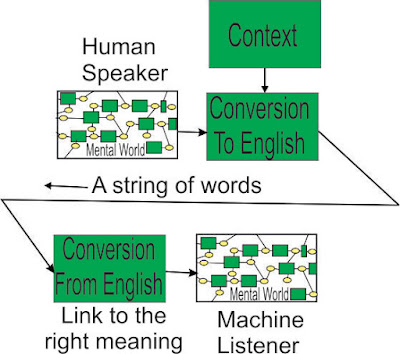Why the Emphasis on Artificial General Intelligence (AGI)?
AI started out as a term to cover Intelligence in the
handling of problems. After multiple failed waves of AI technology, it has
increasingly become data-driven, with no place for intelligence.
Artificial Neural Networks (ANN) is a good example. It is
thought by some that a device can be programmed using data and sent out into
the world to handle the problems it encounters. There are three problems here –
the world is a complex place so some learning on the job would be beneficial, the
data is out of date as soon as it is gathered unless everything is stable, and
someone has to decide on the appropriate inputs and outputs. Deep Learning, a
version of Machine Learning, uses a simple algorithm to decide which inputs and
outputs to keep, by throwing away any inputs that do not change the outputs.
This has its own problems. Some inputs, like the presence of fire escapes, only
rarely affect the outputs, but results can be catastrophic if they are not
present.
Some purveyors of AI use the expression “The answer is in
the data”. This is fine for simple problems, like how many hammers a hardware
store should stock. The companies that sold button up boots saw a steadily
rising sales graph, until disruption in the shape of a zipper came along, and
destroyed their business model. Rather than concentrating on data, their time
would have been better spent on looking for disruptors – specifically patents
for fastening devices related to boots.
Some problems are clearly unsuited to the data approach –
Climate Change, Anti-Money Laundering, where there is an intelligent and nimble
adversary, Strategic Planning, responding to a changing world. Even some of the
problems chosen to work on by people in the AI area - Autonomous vehicles – are far too open for a
programmed approach to be successful. A narrow winding road, with a steep drop
on one side and a wall of rock on the other and lots of blind corners, and no
centre lane marking, does not look like something that can be navigated by a
vehicle trained on urban roads, and without any ability to assess a new
situation and respond to it. The recent encounter of a Tesla with a business
jet in a carpark demonstrated that, after six years of development, the vehicle
is still not aware of the size of the navigable aperture required for it to proceed.
AGI has the ability to make new connections, to look up a
word it doesn’t know in a dictionary, to surmise and test strategies for new
conditions it has never encountered before. There are limits on how much
intelligence it can display. An advantage it holds over humans is that it does
not have a Four Pieces Limit, so while it may be slower and less flexible than a human, it can
manage much larger and more complex problems than a human can, particularly when a human has to fall back on slow and cumbersome tools like programming.
Orion Design Note


Comments
Post a Comment